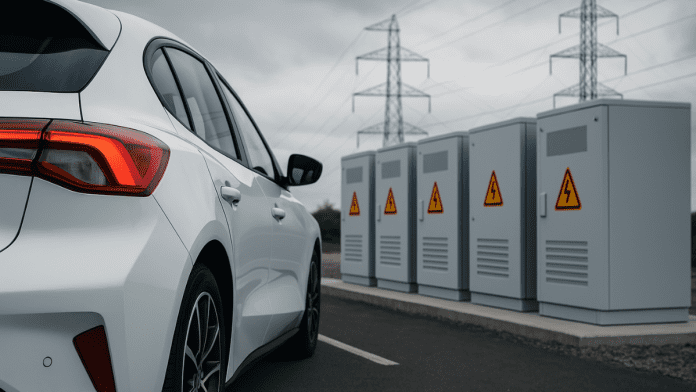🕒 Last updated on July 29, 2025
The electric vehicle (EV) industry in the United States is facing serious challenges. The country was once a major player in the global race toward electric mobility.
EV Makers Hit a Roadblock in the U.S.
But today, many EV makers are slowing down their plans. Why? Because key government support that once helped this industry grow is now being pulled back.
New policy changes have taken away tax credits and other incentives that made EVs more affordable. On top of that, rules that pushed car companies to make cleaner vehicles are now being relaxed. States like California, which once set their own stricter emissions rules, are being blocked from doing so.
This shift in policy is already having a big impact. It cut 14 million electric cars from its sales estimates through 2030. That’s a massive change—and it’s the first time this has ever happened for the U.S. EV market.
With fewer people buying electric cars, manufacturers are now stuck with extra batteries and fewer buyers. And this is pushing the industry in a new direction.
🧱 Finland builds world’s largest sand battery — and it’s heating homes without oil or pollution
Batteries Find a Second Life in Energy Storage
Instead of letting these EV batteries go to waste, American car companies are turning to a different market: energy storage. The idea is simple. These big batteries can hold electricity and release it when it’s needed—just like a power bank for the electric grid.
As electricity demand surges across the U.S., especially because of data centers and artificial intelligence (AI) systems, backup power is becoming more important than ever. When AI systems run non-stop, they use a huge amount of energy. This can strain the electric grid, especially when the sun isn’t shining or the wind isn’t blowing.
This is where EV batteries come in. Companies like General Motors (GM) and LG are now fast-tracking energy storage projects. They’re repurposing both new and used EV batteries to support the grid. These batteries can store extra electricity made during the day and release it at night or during high demand.
In 2024, Tesla saw a 67% jump in its energy storage revenue, which reached $4 billion. This shows how big and important this market is becoming. For EV makers struggling to sell cars, energy storage is now a critical lifeline.
GM recently signed a deal with Redwood Energy. The plan is to reuse both new and old EV batteries in storage systems for data centers. These centers need steady and reliable power to function. The reused batteries will help store clean energy and feed it into the grid or data centers when needed.
🌊 Freshwater Vanishing at Alarming Speed — Four Mega-Regions Face Collapse
Energy Storage Is Becoming National Infrastructure
What was once just an add-on to the EV business is now becoming a core focus. EV batteries are no longer just for cars. They are now seen as key tools to make the entire energy system stronger and more reliable.
Even batteries that are no longer useful for cars still have a role to play. Once an EV battery loses about 20% of its original power, it’s usually replaced. But these “retired” batteries still have enough juice for other uses—especially for storing energy at utility plants or for backup power.
According to experts, old EV batteries can last several more years in these kinds of roles. They help store wind and solar power, which often get produced when demand is low. These batteries then release that stored energy when it’s really needed.
Even when a battery is completely used up, it can still be valuable. Nearly 95% of the materials inside a dead EV battery—like lithium, cobalt, and nickel—can be recycled and reused. These materials can be used to make new batteries for either EVs or energy storage systems.
🛰️ Musk Warns: “Cancel SpaceX Contracts and Astronauts Could Die in Orbit”
This shift is opening up a brand-new market. Car companies can now sell their new and old batteries to energy and recycling firms. That helps them make money even if EV sales are dropping.
As policy changes make it harder to sell electric cars, this new energy storage market is becoming a vital part of the EV industry. It’s not just a side project anymore—it’s a major opportunity that could reshape how the U.S. manages its power needs in the years ahead.

